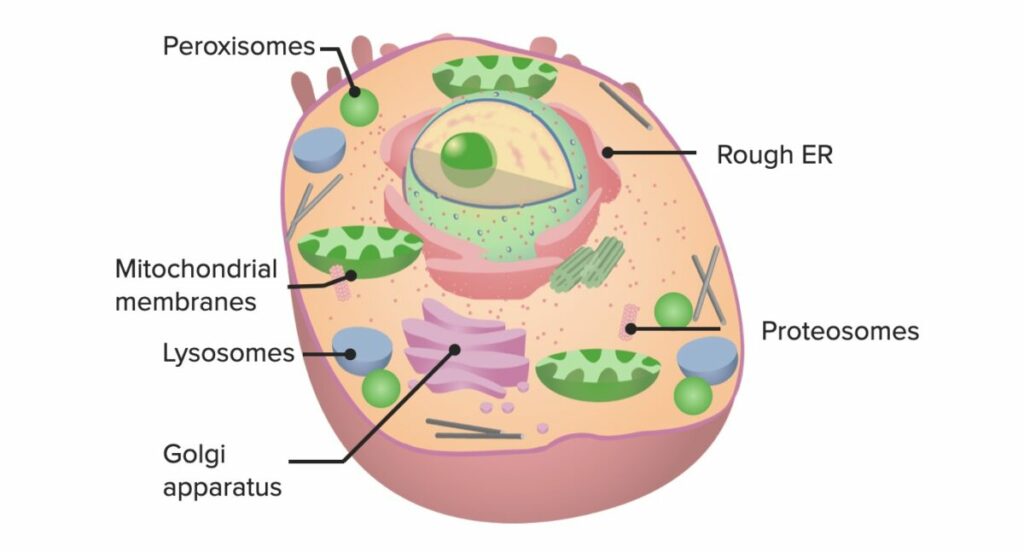Take this Which Cell Organelle Are You quiz to find out. We update the quiz regularly and it’s the most accurate among the other quizzes.
Consider your high school biology class. Do you recall the names and functions of all those little cell parts? Perhaps you’re a little fuzzy on the details? To keep your science abilities keen, here’s a quick refresher course on some of the basic eukaryotic organelles. It might come in handy for your next Trivial Pursuit game!
Nucleus
A micrograph of animal cells displaying the nucleus (dark red stained) of each cell.
The nucleus, sometimes known as the cell’s “command center,” is a massive organelle that contains the cell’s DNA (deoxyribonucleic acid). The nucleus uses DNA’s genetic information to manage all of the cell’s operations, such as growth and metabolism. The nucleolus is a smaller structure within the nucleus that houses the RNA (ribonucleic acid). RNA aids in the transmission of DNA orders to the rest of the cell and serves as a template for protein synthesis. Also, you must try to play this Which Cell Organelle Are You quiz.
Which Cell Organelle Are You?
Ribosomes
Ribosomes are the cell’s protein manufacturers. They are made up of two subunits and can be seen floating freely in the cytoplasm or embedded within the endoplasmic reticulum. Ribosomes synthesize a variety of proteins that are required for cell survival by using the templates and instructions provided by two different types of RNA.
Endoplasmic reticulum (ER)
Ribosomes on the endoplasmic reticulum’s outer surface play a crucial role in protein production within cells.
The endoplasmic reticulum (ER) is a membrane-bound organelle that shares a portion of its membrane with the nucleus. Some parts of the ER, known as the rough ER, are densely packed with ribosomes and are involved in protein synthesis. The remainder of the organelle is known as the smooth ER, and it is responsible for the production of essential lipids (fats).
The Golgi apparatus
The Golgi apparatus, or complex, is essential for protein modification and transit inside the cell.
If proteins from the rough ER need to be modified further, they are transferred to the Golgi apparatus (or Golgi complex). The Golgi apparatus, like the ER, is made up of folded membranes. It looks for specialized “codes” in the amino acid sequences of proteins and alters them accordingly. These processed proteins are then either stored in the Golgi or packaged in vesicles for transport elsewhere in the cell.
About the quiz
Chloroplasts
Internal (thylakoid) membrane vesicles are structured into stacks that exist in the stroma, a matrix. The membranes of the thylakoid vesicles contain all of the chlorophyll in the chloroplast.
Photosynthesis takes place in chloroplasts, which are organelles found in plants and some algae. Chloroplasts contain the pigment chlorophyll, which absorbs solar energy and converts water and carbon dioxide into glucose for nourishment. Autotrophic species may meet their energy needs without devouring other creatures thanks to chloroplasts.
Mitochondria
Mitochondria are oval-shaped organelles found in most eukaryotic cells that serve as the cell’s “powerhouses.” As the site of cellular respiration, mitochondria convert substances such as glucose into the energy molecule ATP (adenosine triphosphate). By breaking its high-energy molecular bonds, ATP powers cellular operations. Mitochondria are particularly abundant in cells that require a lot of energy to function properly, such as liver and muscle cells.
For more personality quizzes check this: Do I Push Everyone Away Quiz




